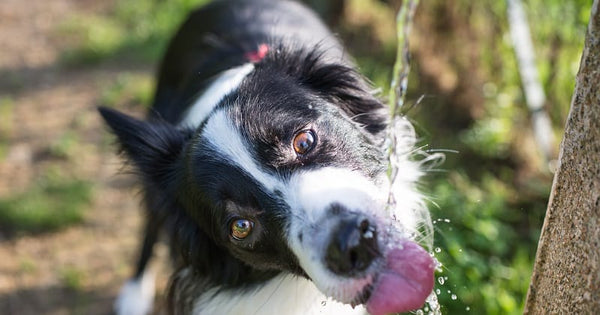

Diabetes in dogs - How to spot it and how to help
Did you know that dogs can get diabetes? In this blog, we’ll take a look at the tell-tale signs to look out for in your pup, and what it means if they’re diagnosed with the disease.
What is canine diabetes mellitus?
Although you may not hear about it that often, dogs can get diabetes mellitus. A lot less is known about canine diabetes than human diabetes, but there are some similarities between the disease in humans and dogs. When a dog has diabetes, it’s usually because their body isn’t making enough insulin or isn’t responding correctly to the insulin from their pancreas.
The pancreas is a small organ in your dog’s abdomen that lies next to the stomach. It plays an important role in helping your dog to digest their food by releasing digestive enzymes and producing hormones, such as insulin.
Insulin is a hormone that regulates the amount of sugar in your dog’s blood. It allows glucose to leave the bloodstream and enter your dog’s tissues, where it can be used as a source of energy. If your pup lacks insulin or doesn’t respond to it properly, their blood sugar levels will rise above the normal range, which can cause a variety of potential problems.

How common is diabetes in dogs?
According to a large 2020 study published in the journal Canine Medical and Genetics(1) 0.26% of dogs have diabetes. Other studies have suggested that the percentage may be a bit higher, but it’s generally agreed that diabetes is not very common in dogs, although it is much more common in some breeds than others.
Dogs at higher risk of diabetes

Female dogs are more likely to develop diabetes than male dogs, and dogs tend to develop the disease around the age of 7-9.
Dogs that have had pancreatitis or Cushing’s Disease are more susceptible to diabetes, and obesity might increase your dog’s chances of developing diabetes, although the jury is still out on whether obesity does predispose dogs to diabetes.
Among different breeds:
- Those at higher risk of diabetes include Samoyeds, Cairn Terriers, Fox Terriers, Poodles, Pugs, and Miniature Schnauzers.
- Those at lower risk of diabetes include Boxers, Collies, German Shepherds and Golden Retrievers.
Signs of diabetes in dogs

What are the signs that your dog might be developing diabetes? Early indications of the disease include:
- Increased urination – your dog asks to go out more often to urinate.
- Excessive thirst – your dog just can’t seem to drink enough water. This is because your dog is losing more fluid than normal from the increased urination, and their body is trying to compensate.
- Unexplained weight loss - even though your dog is eating the same amount of food as normal, they’re losing weight because their body isn’t converting the food into nutrients efficiently.
- Increased appetite – the same lack of nutrients can drive your dog to eat more in the hope of getting more energy from their food.
More advanced signs of diabetes include a loss of appetite and a lack of energy. If left untreated, diabetes can cause serious problems for your pet, including cataracts, an enlarged liver, seizures, and kidney failure. It can also lead to something called ketoacidosis, a potentially life-threatening condition that can be signalled by sweet-smelling breath.
Treatment for dog diabetes
If you notice any of these symptoms, your first stop should be your vet to ask their advice. The earlier you seek help, the better. Your vet will be able to diagnose whether or not your dog has diabetes by carrying out a blood or urine test.
If your dog is diagnosed with diabetes, your vet will discuss treatment, which is likely to include:
- Regular insulin injections – up to twice a day. This may sound alarming, but dogs and their owners usually adapt to this routine reasonably quickly and easily. Your vet will give you all the support and guidance you need.
- A balanced diet that will help to regulate your dog’s blood sugar. Your vet can advise you on the specifics.
- A regular, consistent exercise routine that will help your dog maintain both a healthy weight and healthy blood sugar levels. It’s best to avoid over-long or strenuous bouts of exercise as this could make your dog’s blood sugar levels drop too low.
- Regular check-ups with your vet to monitor the condition.
With the right combination of medication, diet and exercise, most dogs with diabetes will live a long and happy life.
(1)Heeley, A.M., O’Neill, D.G., Davison, L.J. et al. Diabetes mellitus in dogs attending UK primary-care practices: frequency, risk factors and survival. Canine Genet Epidemiol 7, 6 (2020). https://doi.org/10.1186/s40575-020-00087-7



